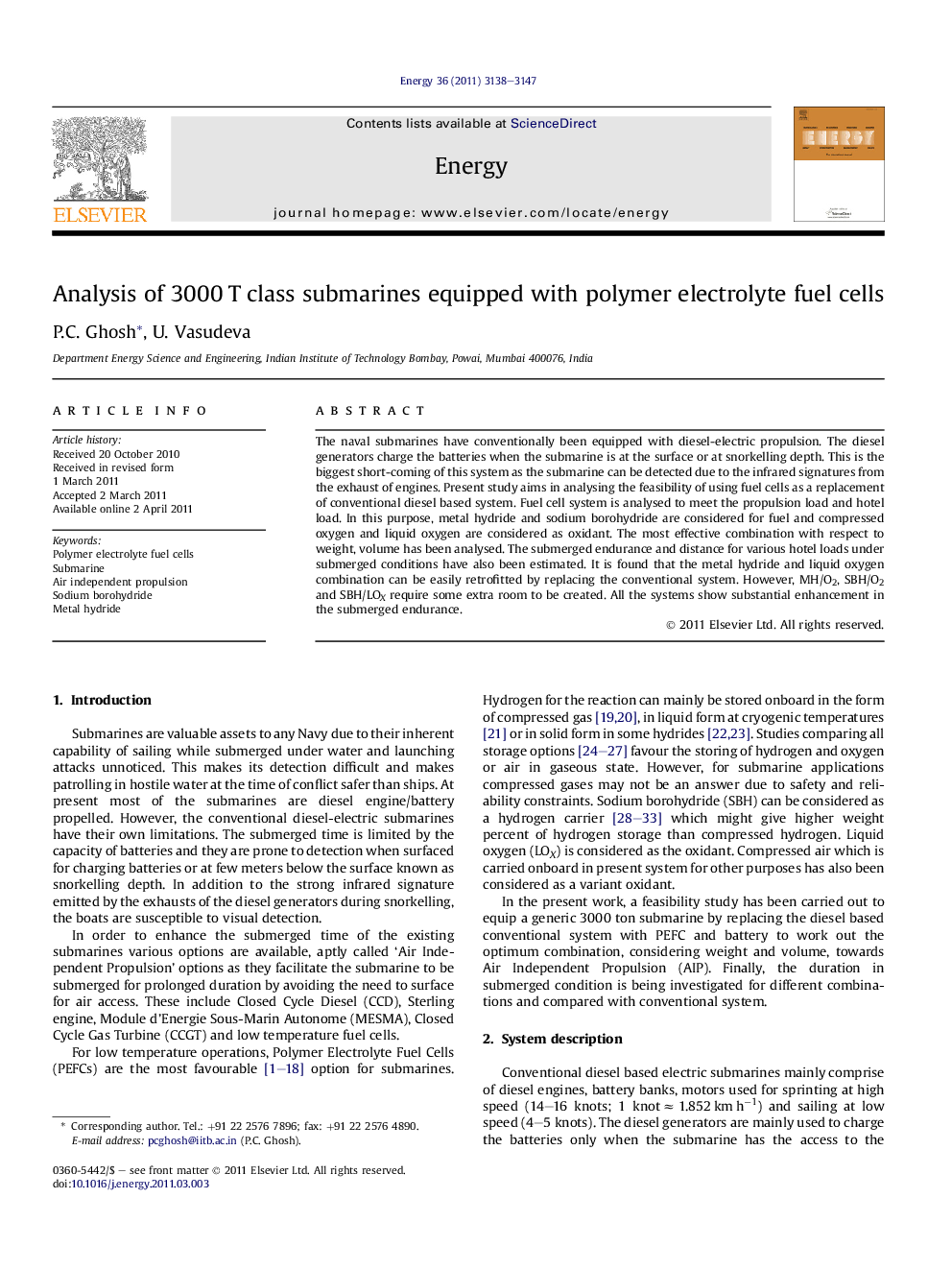| Article ID | Journal | Published Year | Pages | File Type |
|---|---|---|---|---|
| 1734547 | Energy | 2011 | 10 Pages |
The naval submarines have conventionally been equipped with diesel-electric propulsion. The diesel generators charge the batteries when the submarine is at the surface or at snorkelling depth. This is the biggest short-coming of this system as the submarine can be detected due to the infrared signatures from the exhaust of engines. Present study aims in analysing the feasibility of using fuel cells as a replacement of conventional diesel based system. Fuel cell system is analysed to meet the propulsion load and hotel load. In this purpose, metal hydride and sodium borohydride are considered for fuel and compressed oxygen and liquid oxygen are considered as oxidant. The most effective combination with respect to weight, volume has been analysed. The submerged endurance and distance for various hotel loads under submerged conditions have also been estimated. It is found that the metal hydride and liquid oxygen combination can be easily retrofitted by replacing the conventional system. However, MH/O2, SBH/O2 and SBH/LOX require some extra room to be created. All the systems show substantial enhancement in the submerged endurance.
► Among various possible combinations of fuel cell and battery for submarine, analysis based on the total weight and volume favours only fuel cell based system. ► Among different combinations for fuel and oxidant, the MH/LOX storage combination along with fuel cell could be simply retrofitted in the present system. ► For MH/O2, SBH/O2 and SBH/LOX an extra room has to be created to compensate the deficit of volume respectively 32 m3, 186 m3 and 209 m3. ► With SBH and LOX the minimum submerged endurance could be 6.5 days with almost 120 h of sprinting with a total travelled distance of 3500 km. ► The submerged endurance is further improved to 33 days if the sprinting time is reduced to 84 h.
